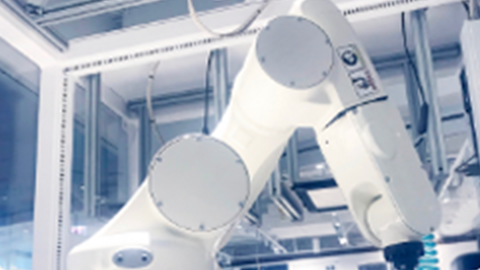We are helping the farmers achieve efficient irrigation and save water by helping the manufactures produce better drip irrigation equipment. Take a peek !
April 02, 2021

Overview
At 157.35 million hectares, India holds the second largest agricultural land in the world. Though agriculture is one of the key contributors towards the GDP, the last few years have been witnessing a decline in this contribution of farm income owing to many reasons such as high input costs, errant weather, quality of natural resources like soil nutrients and the depleting levels of water.
Water scarcity is now an ever present concern for millions of farmers in India who rely on stable sources of groundwater to cultivate crops outside of the monsoon season. India uses 80% of its surface water for irrigation for agriculture alone, which is more than any other sector. Much of this water is applied inefficiently using flood irrigation, which is the prevailing irrigation practice among farmers in India. This result in considerable loss of water – around 60% of water applied – in the form of surface run off, percolation and bare soil evaporation that does not contribute to any increases in yield. Thus many marginal farmers are forced to spend a disproportionate amount on pumping water or make do with lower yields when water is not available.
Drip irrigation is one time tested technique that can help save water usage and thus saving energy required for pumping as well increase productivity. Thus, motivating and helping farmers to adopt drip irrigation is one of the ways to reduce the usage of water and contribute to increasing farm productivity.
The story is about
The story narrates an industrial automation –led indirect- approach towards increasing the acceptance of drip irrigation amongst farmers by enabling the machine builders produce better equipment which meet and answer many critical issues acting as a deterrents in making the technology reach the farmers at large.

Other benefits ensued are: saving of fertilizers, saving of energy, lesser labor, reduction in weeds, more crops cycle per year, etc. Omron looks at the challenges in adoption of the technique by the farmers from the perspective of machine builders:
While researching more on the sector and the technology, the team identified the key challenges acting as deterrents for the customer and machine builders at large in producing the right machines which have a better rate of acceptance by the end users and truly help the farmers reap the benefits of the drip irrigation technology.
The challenges were
- Increasing the production speed of the drip pipe manufacturing machines
The manufacturer was struggling with a speed of the order of 40-50 meter/ minute and the need was to take it up to approximately 100 meters per minute to make the whole process better in terms of productivity and reduce the cost of the drip irrigation pipes making them more affordable for the farmer. - Drip hole/ emitter’s accuracy
During punching, the hole must come at the desired location. If not placed precisely, the emitter will not make the water reach the base of the plant and thus will not serve it’s intended purpose. - Managing the rejection rate
There was a dire need to check the presence & absence of holes in the final product. This is generally done manually by the manufactures which leads to errors and ultimately rejection of the finished product by the farmers.
The solution
- Team Omron put in efforts to customise their existing automation solutions and came up with an end-to-end single source solution comprising of Omron Motion Controller + Servo + vision-based Quality Inspection
- The ensemble, owing to its performance in terms of accuracy and reliability, won the trust of the machine builders despite their initial reluctance owing to their long association with competitors and despite Omron being a new entrant in this particular type of machines.
Values created
- Achieved desired accuracy of the emitter: Within the targeted range of +/-0. 5mm.
- Machine speed increased: from approximately 40 to 100 meters per minute.
- Automated quality inspection leading to a significant reduction in rejections: Empowered with the vision based solutions, the hitherto manual quality inspection was automated leading to ‘auto-inspection’ with ‘auto-correction’ resulting into a significant reduction in the rejection rate.
- One-stop solution: based on a single source platform, the solution helped a lot in saving on time while planning, commissioning and after sales support which had a great role in gaining acceptance from the end users.
The way ahead








.jpg)
.jpg)
.jpg)
Comment